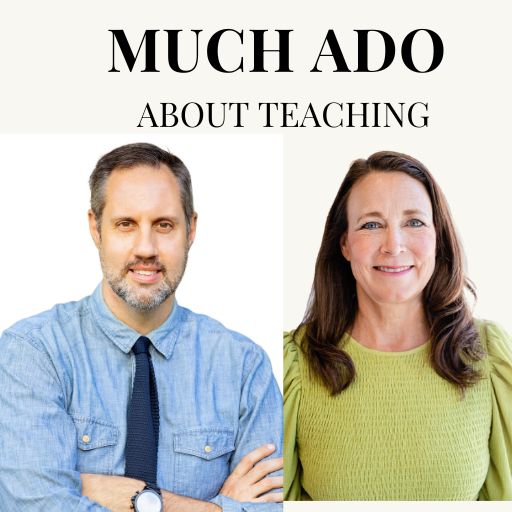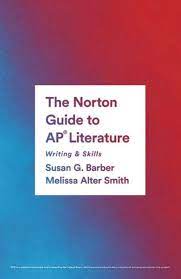My students summarize, I want them to analyze. This is the battle I face every year.
This comes out most often when they get their essays back. They are hoping that I recognized and rewarded their brilliance. But when I conference with students about their work, and we put their essay under a microscope, they see that what’s on paper doesn’t match what they thought in the moment. That’s when they have the “a-ha!” moment. Only in hindsight did they realize that what they thought was insightful was actually superficial. Time and pressure got the better of them. In their rush to finish everything in one class period, they went with their first thought and impulse rather than taking the time to think through and think deeper into a text.
This is in no way meant to diminish my students. They are writing in a timed environment, in a competitive class, and for many of them, every grade matters. This blog post took me over two hours to write. If writing were easy Fitzgerald would have finished The Great Gatsby in two months rather than two years. This is why I love to offer students the opportunity to rewrite their essays. Writers are made better with time and revision.
But there still is that pesky dilemma of helping them in the moment.
Throughout the year I offer my students different frameworks to think about how to analyze a text. Each is a way to think clearer and articulate with greater specificity. Better thinking leads to better writing.
In doing so, I am always trying to teach them that these frameworks extend beyond the English classroom, they are what critical thinkers do all the time. Doctors that can detect a tiny heart murmur and can make the connection to a more significant heart condition can save someone’s life. The engineer that can look closely at the design of a piece of furniture and understand how the assembled parts function can repair just about anything. The school psychologist that can perceive a look of hurt in a student’s eyes can get that person the help they need. All of these examples represent people that paid attention to the details and drew significant inferences from them. That’s what I’m trying to teach my students each day in class — pay attention to the details and make significant inferences.
Here are three acronyms that I use in my classroom to teach my students to deepen their understanding and articulate better insights so that when they put pen to paper, they have a framework to move beyond the superficial.
LIT
Best used for: poetry
Literal — Before they understand a poem, my students want to spot all the similes, metaphors, and personification. That should come later. Before they begin their analysis they need to know what is literally happening in a text. This is foundational to any understanding. It grounds students and gives them confidence to move up the ladder of abstraction because it gives them the base from which to climb to higher levels of meaning.
With poetry, I ask students to find four lines or sections in the poem and tell me literally what is happening at that moment.
Inferences — This step moves students to think critically. Students have to find three moments in a poem where they can identify opportunities to make strong inferences and explain those inferences. In essence, they find places where the poem is suggesting or implying something without “literally” saying it. These are the moments when we, as readers, feel something is hinted without being said. It may be a moment where a tone shifts. It may be that an ironic moment. It could be a phrase that is not meant to me taken literally, but is used figuratively.
Thematic — Once students have found and made four literal statements about a poem and developed three different inferences about other moments in the poem, they should have enough to synthesize all this material and develop two thematic statements about the poem. This is the culminating step that alls them to see the big picture and connect the text to broader human conditions.
WHW — WHAT, HOW, WHY?
Best used for: fiction
What happens — This approach is similar in that I want my students beginning with an concrete understanding of the action or events of a text. This is important because sometimes my students want to jump to analysis before they have an understanding of what happens. This weakens their insights because they cannot tether them to anything fundamental about the text.
I’ve used this approach with snippets or whole chapters of a text. When closely reading the first page of The Catcher in the Rye, students will tell me that the narrator is a character in the story and is reflecting on is past, especially his relationship with his parents.
How does it happen — In this step, students will examine technique and the way in which an author enhances what happened. They will focus on how an author develops a text. Using the Catcher example, students will look at the first person point-of-view established on the first page, recognizing its power and limitations. They will also examine the relationship between diction and tone, noticing how words “lousy” “crap” and “occupied” reveal a character that seems cynical and disconnected.
Why is it important — Now that students understand the techniques at play, this final question asks them to consider the implication. As veteran and admired English teacher Rob Brown said on the AP Lit. Facebook group, “I feel like I’ve spent a significant portion of my adult life trying to convince students that the most important question in the universe is “So what?” followed closely by its cousin “Who cares?” This final step gets to the heart of that challenge. Using the same example, I want my student to think about why a book begins with a narrator telling his own story, looking back on his past with a jaded, cynical, and detached lens?
ICE
best used for: writing
Introduce — For my struggling writers, this acronym is their template for evidence and commentary in their body paragraphs. It gives them the means to introduce the concept that forms the basis of their analysis.
Here’s an example of a student introducing a concept from Robert Hayden’s “Those Winter Sundays”: Hayden is able to develop the concept that no matter what the father did to drive out the cold, his actions will likely go unnoticed by the very person for whose benefit they are done;
Cite — Here is where they give the evidence from the text.
Even the first two words of the poem (“Sundays too”) suggests that their father not only sacrifices his own day of rest for his child, but repeats these small acts of love everyday of the week, all of it going unappreciated.Hayden highlights how “indifferently” the speaker was to their own father even though he “made banked fires blaze” creating warmth for the house and going so far as to polish their good shoes; as an adult looking back, the speaker is able to finally perceive their father’s sacrifices for them without expecting anything in return (“no one ever thanked him”) and acting solely out of love for his family; through the contrasting imagery of cold (“blueblack cold,” “cold splintering, breaking,” “indifferently,” “lonely”) and hot (“banked fires blaze,” “when the rooms were warm,” “chronic angers”)
Explain its effect — This is where insight is developed based on the evidence provided. In the example above, the effect of the evidence is seamlessly woven with the evidence. I find this far superior to the robotic, formulaic, and plodding way of writing one sentence that introduces the topic, one sentence that provides the evidence, and one sentence that explains the effect.













2 comments
Abbey
This is good. What I like is it serves more as gentle reminders and not as heavy handed controls, as acronyms sometimes attempt to do.